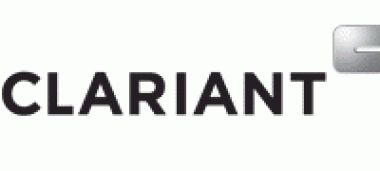Peter Dornier-Stiftungspreis 2022 würdigt Dresdner Textilforschung zu gewebter Herzklappe
Laut Weltgesundheitsorganisation (WHO) gehören Herz-Kreislauf-Erkrankungen zu den häufigsten natürlichen Todesursachen. Weltweit sterben daran jährlich etwa 17 Millionen Menschen. Mit dem Peter Dornier-Stiftungspreis 2022 wurde nun am 21. Juli 2022 eine Forschungsarbeit von Herrn Dipl.-Ing. Mathis Bruns vom Institut für Textilmaschinen und Textile Hochleistungswerkstofftechnik (ITM) der TU Dresden ausgezeichnet, die die medizinische Versorgung von Menschen mit unzureichender Herzklappenfunktion künftig verbessern und das Leben der Patienten verlängern soll.
Das menschliche Herz ist eine Hochleistungsmaschine: Über die Lebenszeit eines Menschen hinweg schlägt es fast drei Milliarden Mal, pumpt dabei rund 200 Millionen Liter Blut durch den Körper. Enorme Belastungen, die mitunter zu lebensgefährlichen Verschleißerscheinungen führen können. Gerät eine Herzklappe aus dem Tritt, erhalten Patienten in der Regel künstlich-mechanische oder biologische Klappen als Ersatz. Mechanische Lösungen sind jedoch mit einer lebenslangen Einnahme blutverdünnender Medikamente verbunden. Außerdem kann es zu hörbaren Schließgeräuschen kommen; so klagt fast ein Viertel der Patienten mit mechanischer Herzklappe über Schlafstörungen. Biologische Herzklappen wiederum, etwa aus tierischem Gewebe, haben einen hohen manuellen Herstellungsaufwand und eine kürzere Lebensdauer.
Potenzial des Webens für Medizinprodukte aufgezeigt
Deshalb forscht Diplomingenieur Mathis Bruns am Institut für Textilmaschinen und Textile Hochleistungswerkstofftechnik (ITM) der TU Dresden an einer Implantat-Alternative aus Gewebe. Im Rahmen eines Forschungsprojekts, an dem auch Herzchirurgen aus dem Herzzentrum Dresden sowie der Uniklinik Würzburg beteiligt waren, lieferte Herr Bruns mit seiner Diplomarbeit wichtige Erkenntnisse für das Weben einer künstlichen Herzklappe. Für seine Arbeit mit dem Titel „Entwicklung von Schlauchstrukturen mit integrierter Ventilfunktion“ hat Mathis Bruns nun den mit 5.000 Euro dotierten Peter Dornier-Stiftungspreis 2022 erhalten. Dr. Adnan Wahhoud, ehemaliger Leiter der Entwicklungsabteilung Luftwebmaschine bei der Lindauer DORNIER, sagte bei seiner Laudatio: „Der Preisträger demonstriert mit seiner Arbeit sehr anschaulich, welches Potenzial in der Webtechnik steckt, um Gewebe komplexer Form, Geometrie und Gestalt herzustellen mit dem Ziel, das Leben von Menschen zu verlängern und zu verbessern.“ Die ausgezeichnete Diplomarbeit, sei eine Bereicherung der Forschung an dreidimensionalen Geweben zum Einsatz in der Medizin.
Ersatzherzklappen ohne Naht weben
„Ein besonderer Vorteil unseres Ansatzes liegt in der integralen Herstellungsweise“, sagt Stiftungspreisträger Mathis Bruns. Die Geometrie und Funktion einer Herzklappe sei derart komplex, dass sich gewebte Herzklappen bislang nicht in dieser Form herstellen ließen. Durch den kombinierten Einsatz einer Spulenschützen-Bandwebmaschine und einer Jacquard-Maschine sei es jedoch gelungen, die Ersatzherzklappe so zu weben, dass sie nicht mehr zusammengenäht werden müsse. Selbst die Schlauchstrukturen für die Blutgefäße und die integrierte Ventilfunktion seien „aus einem Guss“. „Nähte sind immer eine Schwachstelle in textilen Medizinprodukten“, sagt Bruns. Ein weiterer Vorteil der gewebten Herzklappe: Sie soll sich auch mit Hilfe einer minimal-invasiven Operation einsetzen lassen. Demnach soll die eingefaltete Klappe, die etwa so groß ist wie ein Teelicht, mit einem Katheter über die Blutbahn an die Zielstelle im Herzen geschoben und dort entfaltet werden. Brustkorb und Herz der Patienten müssten dann nicht mehr aufgeschnitten werden, erklärt Preisträger Bruns.
Textile Struktur ähnelt menschlichem Gewebe
Seit jeher entstehen verschiedenste Medizinprodukte auf den Webmaschinen der Lindauer DORNIER. Kunden fertigen auf ihnen unter anderem Gewebe für Bandagen, Prothesen, Blutfilter und Orthesen. Dass auf den Maschinen aus Lindau in Zukunft vermehrt auch Implantate wie Herzklappen gewebt werden, ist für Mathis Bruns nur naheliegend. „Textiles Gewebe ist dem menschlichen Gewebe sehr ähnlich“, sagt er. Wie ein textiles Gewebe sich aus Tausenden Einzelfäden zusammensetze, bestehe auch der menschliche Körper zu einem großen Teil aus fadenförmigen Materialen. „Muskelfasern leiten Kraftimpulse, Nervenbahnen senden Reize wie beispielsweise Schmerzen und Gehirnzellen leiten über fadenförmige Dendriten und Axone Informationen.“ Aufgrund ihrer „Fadenförmigkeit“ seien gewebte Implantate deshalb besonders geeignet für medizinische Anwendungen.
TU Dresden Peter Dornier-Stiftungspreis Institut für Textilmaschinen und Textile Hochleistungswerkstofftechnik Medizin und Gesundheitsindustrie
Lindauer DORNIER GmbH / TU Dresden








